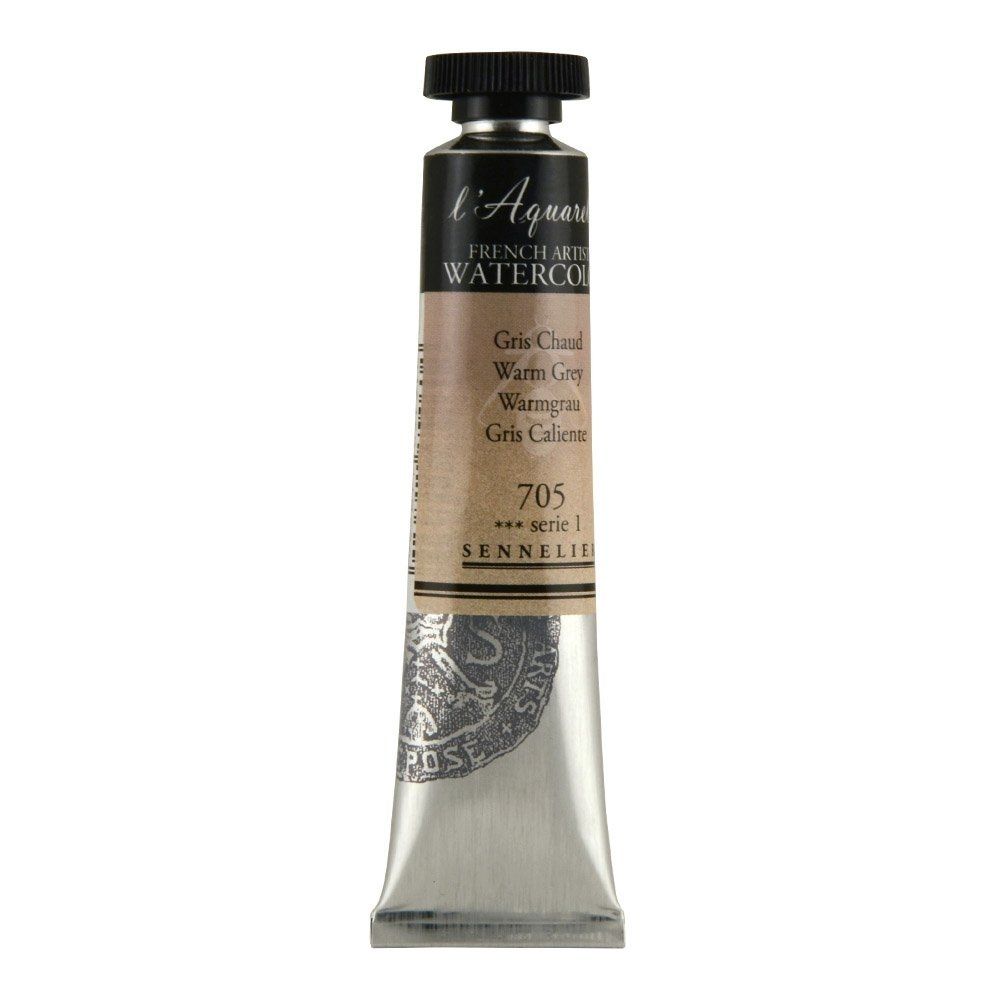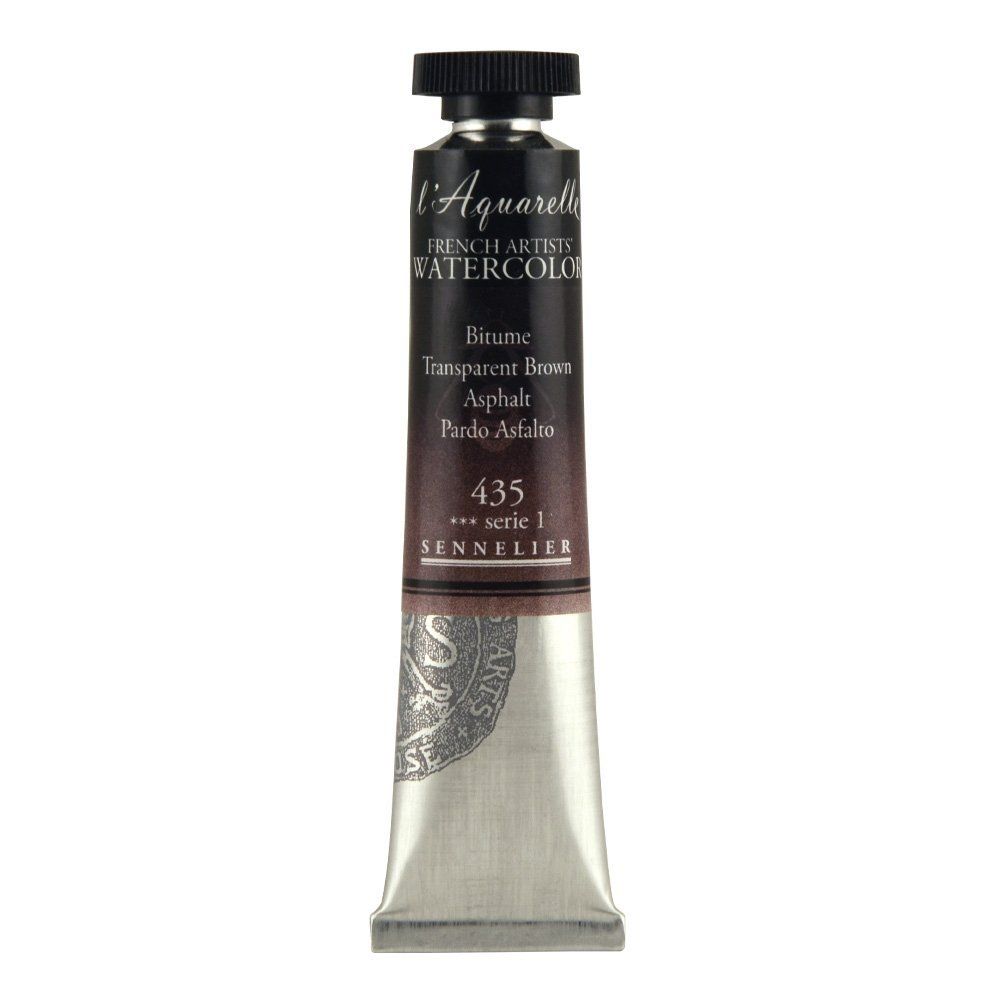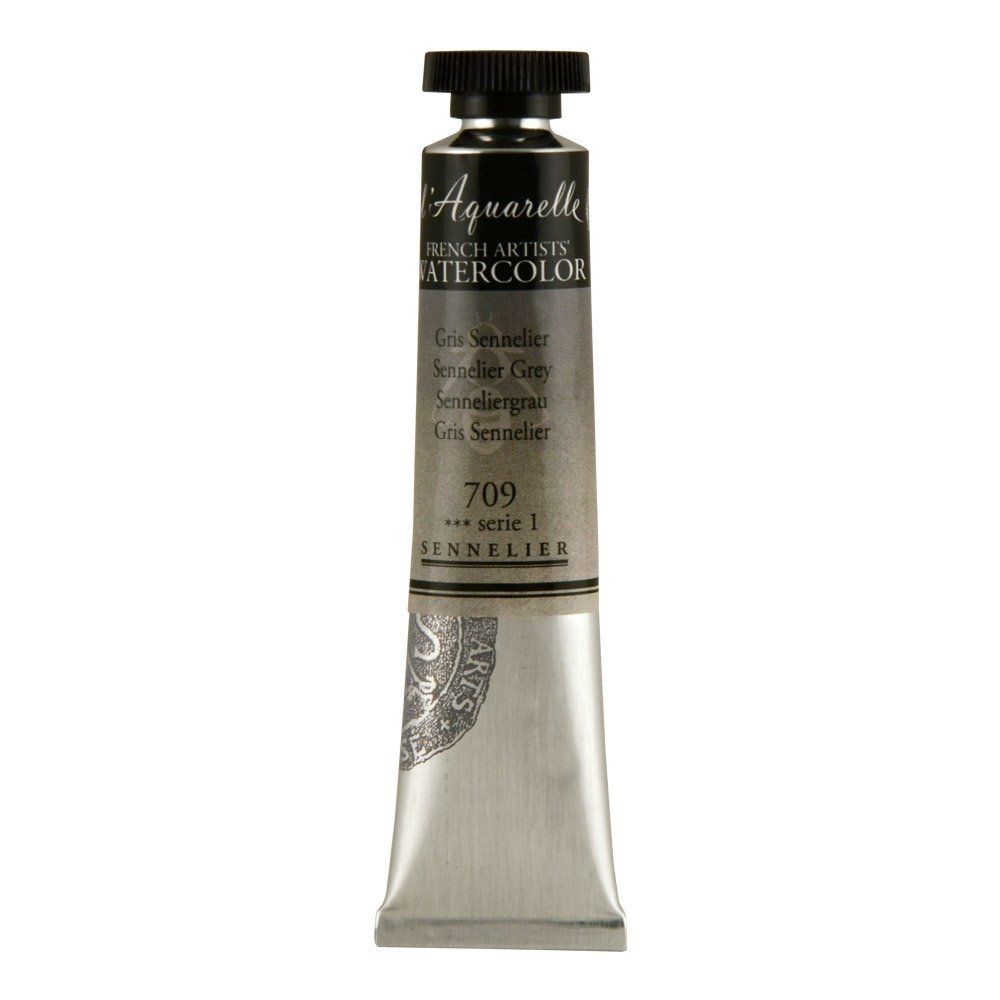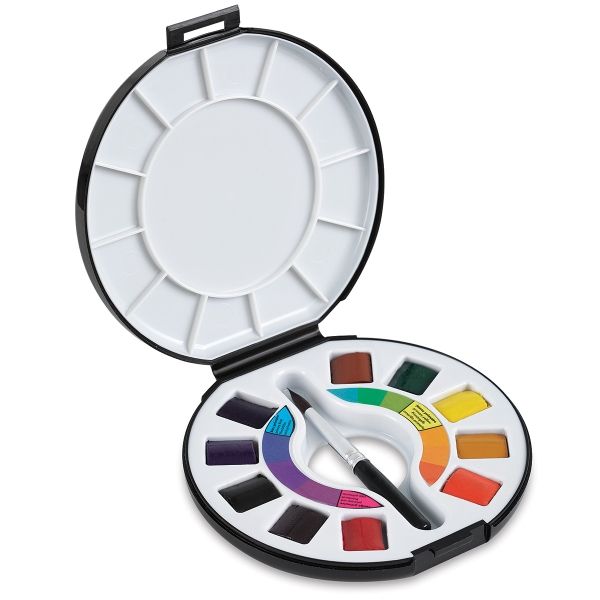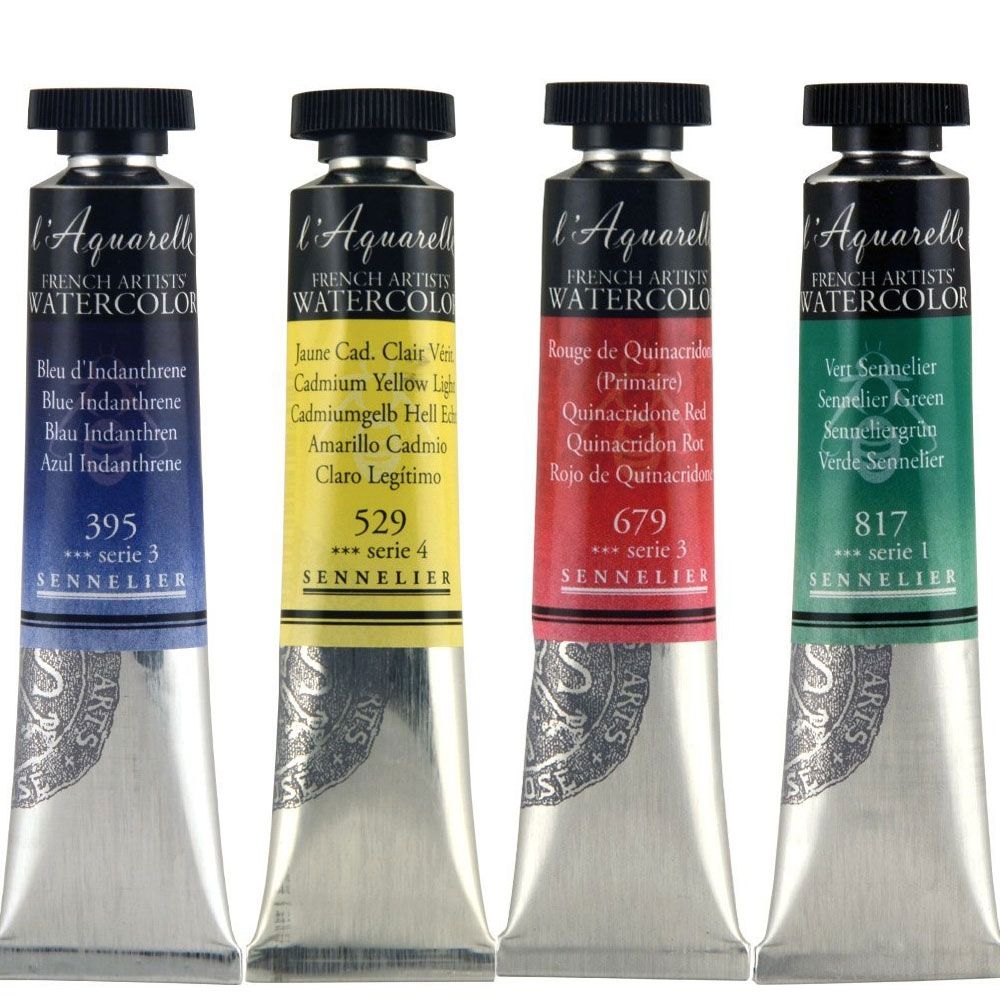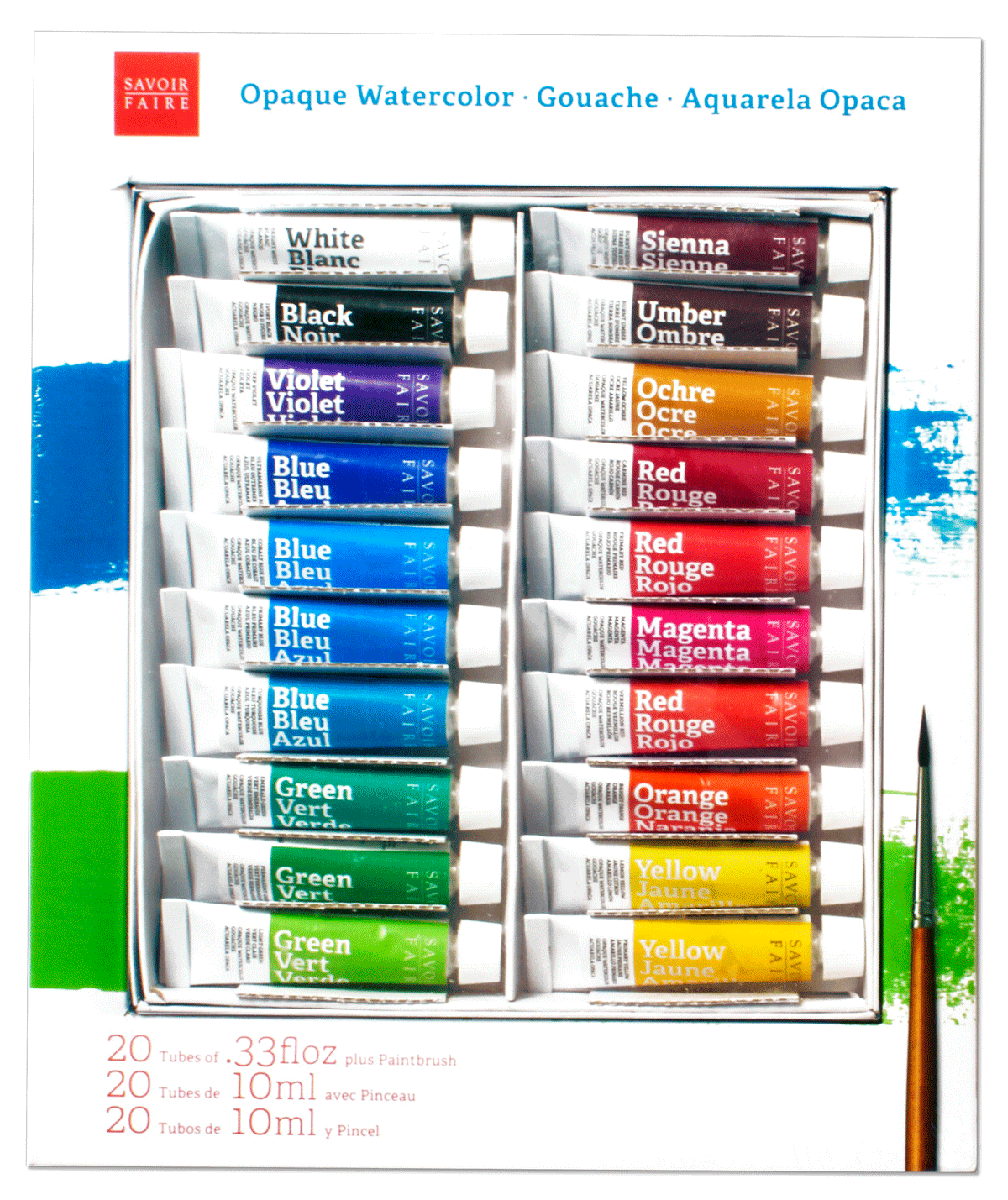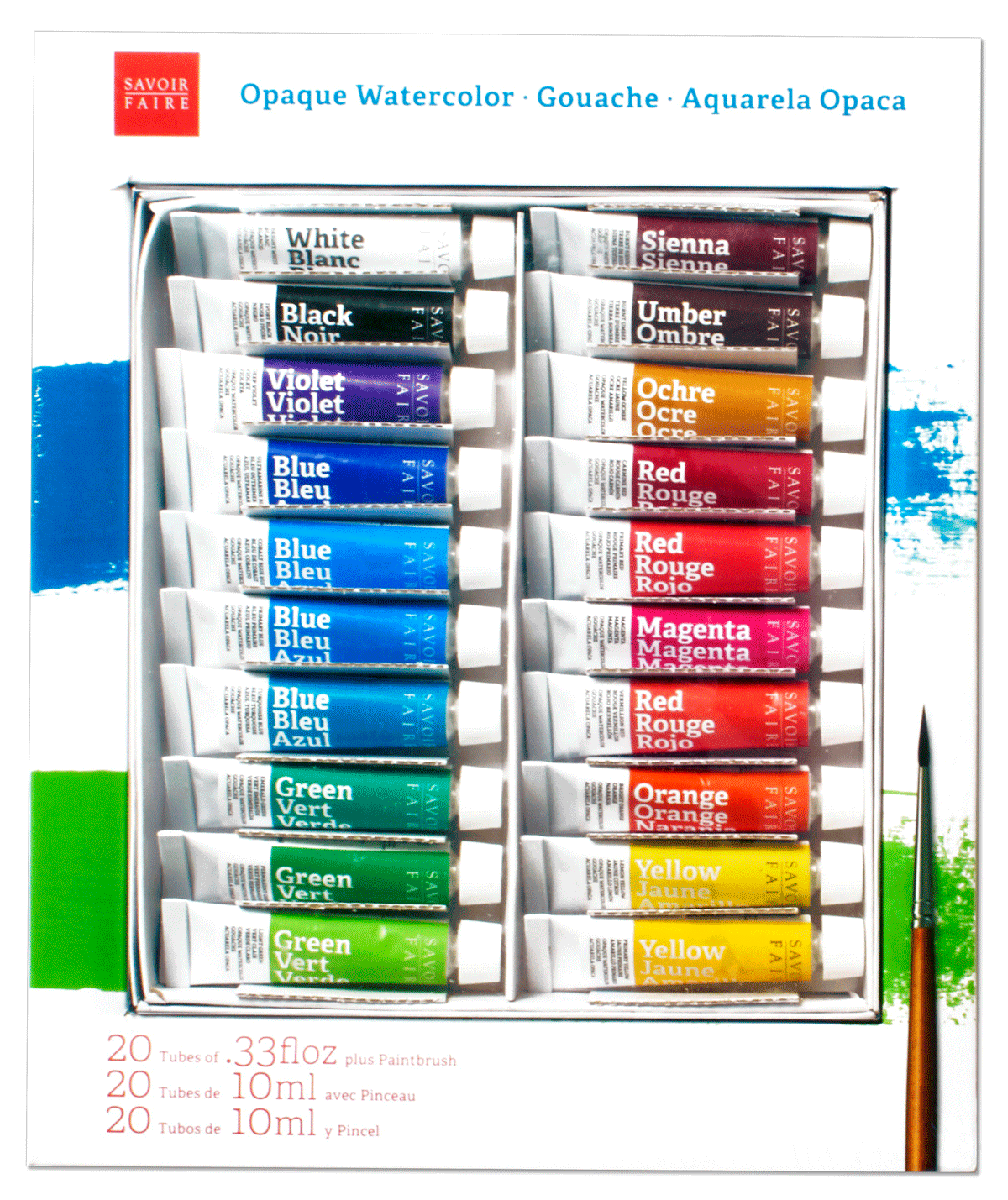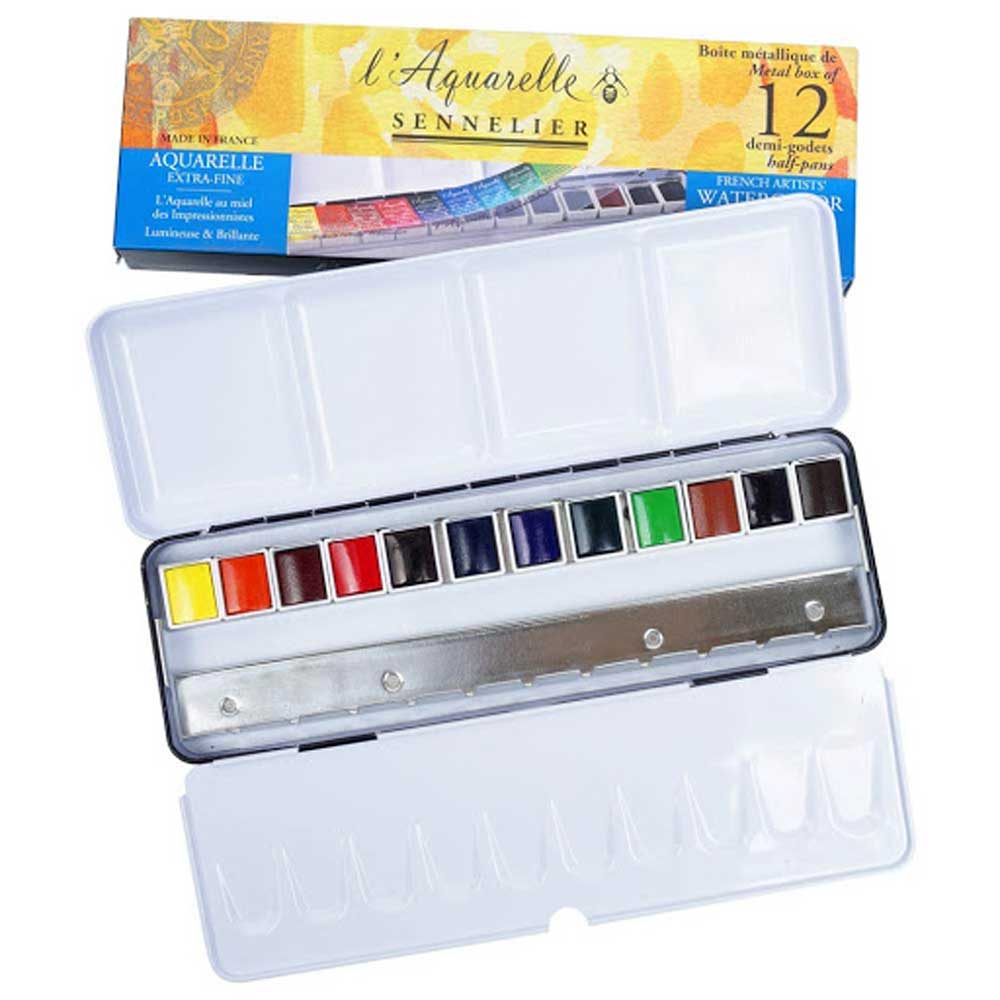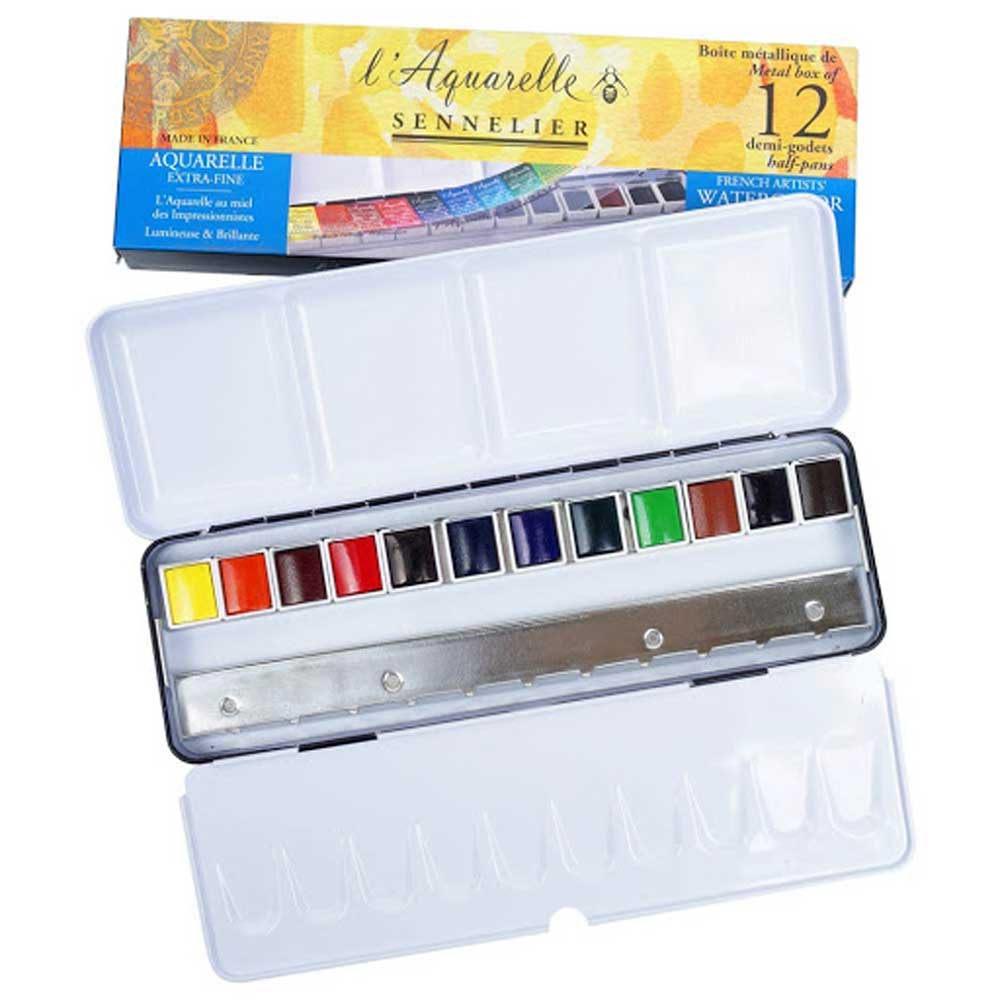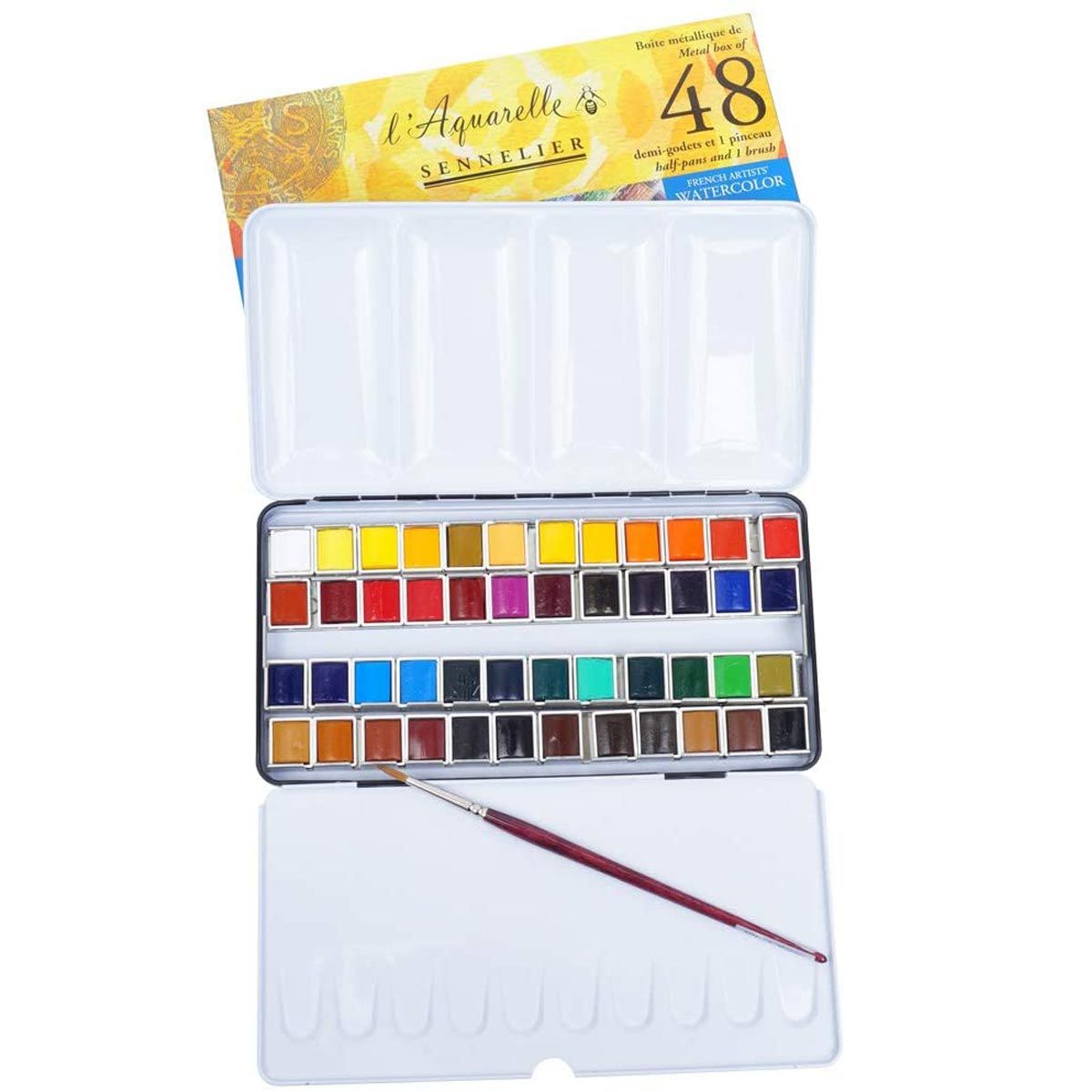Sennelier Watercolour S1 Warm Grey (705) 21 ml
Warm Grey (705) Mars Black is an opaque black with a strong and cool masstone, a slightly warm tint, and a warm brown undertone that dries quickly and has excellent tinting strength. Synthetic iron oxides are brighter, more robust, finer, and more permanent than natural red iron oxides. Titanium White is the most brilliant white pigment semi-opaque in watercolour form. Yellow Ochre PY42 is made from synthetic iron oxides and provides artists with earth tones from cream to brown.
- Pigment Name: PBk11—Mars Black: PR101—Red Iron Oxide: PW6—Titanium White: PY42—Yellow Ochre
- Pigment Type: PBk11-Earth: PR101-Earth, synthetic; PW6-Inorganic; PY42-n/a
- Series: 1
- Opacity: Opaque
- Permanence/Lightfast: (1) ***
Sennelier Watercolour S1 Warm Grey (705)
Warm Grey (705) Mars Black is an opaque black with a strong and cool masstone, a slightly warm tint, and a warm brown undertone. It is not as black as Ivory Black but dries more quickly and has three times the tinting strength. Red iron oxide varies in hue and transparency, depending on hydration and slight impurities.
Synthetic iron oxides have mostly replaced natural red iron oxides and are brighter, more robust, finer, and more permanent. Titanium White is the most brilliant of the white pigments and is semi-opaque in watercolour form. Yellow Ochre provides artists with earth tones from cream to brown. PY42 is made from synthetic iron oxides. PY43 is made from natural iron oxide.
Mars Black PBk11 is an opaque black with a strong and cool masstone, a slightly warm tint, and a warm brown undertone. It is not as black as Ivory Black but dries more quickly and has three times the tinting strength. Mars Black is usually the only black available in an acrylic form that is safe to over-paint. It can be used in all media without reservation and is widely used as an alternative to Lamp Black and Ivory Black. Chemical Name: iron oxides.
Permanence: Mars Black is very lightfast with excellent permanence.
Toxicity: Mars Black has no significant hazards and is the only primary black pigment considered non-toxic.
History: Mars refers to the Roman god of iron and war. Mars Black was developed in the early 20th century from inorganic, synthetic iron oxide.
Alternate Names: Black Iron Oxide, Iron Black, Magnetic Oxide, Mapico Black, Mineral Black. Sometimes labelled as Vine Black.
PR101 Red Iron Oxide varies in hue and transparency, depending on hydration and slight impurities. Indian Red is a slightly duller, deep brick hue with a bluish undertone. It is very dense and opaque, with excellent tinting strength and covering power. It is dependable when mixed with all other permanent pigments and yields good flesh tints when mixed with Zinc White. It is the synthetic version of PR102, a pigment made from earth reds or natural red iron oxides, and the names applied to PR101 and PR102 often overlap. Synthetic red iron oxides have mostly replaced natural red iron oxides and are brighter, more robust, finer, and more permanent. Indian Red is the highest-grade bluish shade. Light Red, English Red, and Venetian Red are yellowish shades. Mars Violet is a dull and subdued bluish or purplish oxide. Chemical Name: iron oxides (synthetic), iron oxide, silica, alumina, lime, and magnesia or hydrated iron oxide
Permanence: Red iron oxide is very lightfast with excellent permanence.
Toxicity: Red iron oxide has no significant hazards.
History: Natural red iron oxide comes from the mineral ore hematite, called bloodstone by the ancient Greeks from the word hema, meaning blood. It is one of the oldest pigments, has been used by every major civilization, and was an essential mineral for medieval alchemists. It was not widely used in artists' materials until the 17th century and was not produced in large quantities until the 18th century.
Alternate Names: Indian Red, Colcothar, English Red, Light Red, Mars Red, Mars Violet, Morelle Salt, Pompeian Red, Indian Red, Red Oxide, Sinopia, Spanish Red, Terra Rosa, Tuscan Red, Venetian Red, Venice Red.
PW6 Titanium White is the most brilliant of the white pigments. It is considered an all-purpose oil colour useful in all techniques and the best all-around white. Its masstone is neither warm nor cool, placing it somewhere between Lead White and Zinc White. It is less prone to cracking and yellowing than Lead White, but it still yellows easily. Titanium White dries slowly in oil form, more slowly than Lead White but more quickly than Zinc White. It is opaque in oil and acrylic forms and semi-opaque in watercolour form. This pigment has good chemical stability, and its tinting strength is superior to both Lead White and Zinc White. Chemical Name: titanium dioxide
Permanence: Titanium White has excellent permanence and lightfastness.
Toxicity: Titanium dioxide is highly stable and is regarded as completely non-toxic. Animal studies do not indicate that it is absorbed biologically, even after long periods of exposure. The primary safety concern is with the inhalation of fine pigment dust particles. If inhaled in large amounts over the course of several years, Titanium White may cause a benign pneumoconiosis that is visible on x-rays. The National Institute of Occupational Safety and Health (NIOSH) considers fine titanium dioxide particles, if inhaled, to be human carcinogens. Artists' primary concern is avoiding exposure to fine particulate dust from raw pigments.
History: Titanium is the ninth most abundant element in the Earth's crust. However, mineral deposits that are economical to mine are less common. Titanium dioxide was first discovered in 1821, although it could not be mass-produced until 1919. Widespread use of the pigment began in the 1940s. Since that time, it has become the most commonly used white pigment. The name comes from the Latin word Titan, the name for the elder brother of Kronos and ancestor of the Titans, and the Greek word tito, meaning day or sun.
Alternate Names: None.
PY42 Yellow Ochre provides artists with earth tones from cream to brown. It has good hiding power, produces quick-drying paint, and can safely mix with other pigments. Its transparency varies widely from opaque shades to more transparent ones, which are valued for their use as glazes. If gypsum is present, Yellow Ochre is not suitable for frescoing. (See Brown Ochre, PY43.) PY42 is made from synthetic iron oxides. PY43 is made from natural iron oxide. Chemical Name: iron(III)-oxide, hydrated
Permanence: Yellow Ochre has excellent permanence because ochres are some of the most permanent pigments available.
Toxicity: Yellow Ochre is non-toxic unless it contains manganese.
History: Ochre comes from the Greek word ochros, meaning pale yellow. It was one of the first pigments used by human beings, and evidence of its use has been found at 300,000-year-old sites in France and former Czechoslovakia.
Alternate Names: Chamois, Iron Yellow, Mars Orange, Mars Yellow, Minette, Ochre, Sil, Yellow Earth, Yellow Oxide. Varieties of Yellow Ochre include Brown Ochre, Flesh Ochre, Roman Ochre, Spruce Ochre, and Transparent Gold Ochre.
| Size | 21 ml |
|---|---|
| Brand | Sennelier |
| Country of Manufacture | France |
| Type of Store Credit value | Select |










